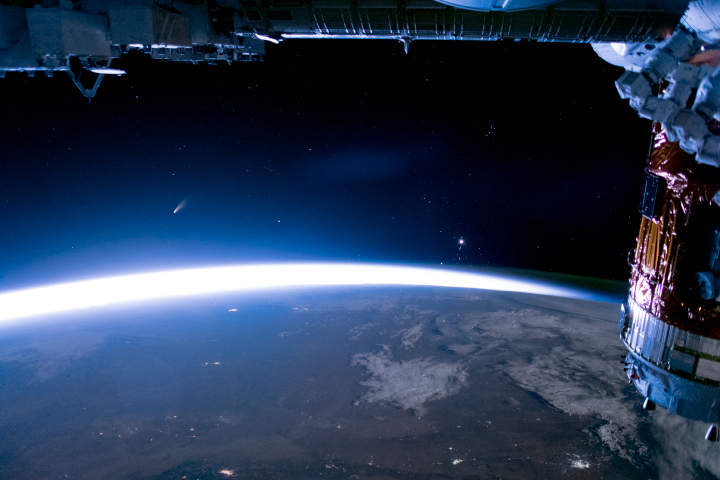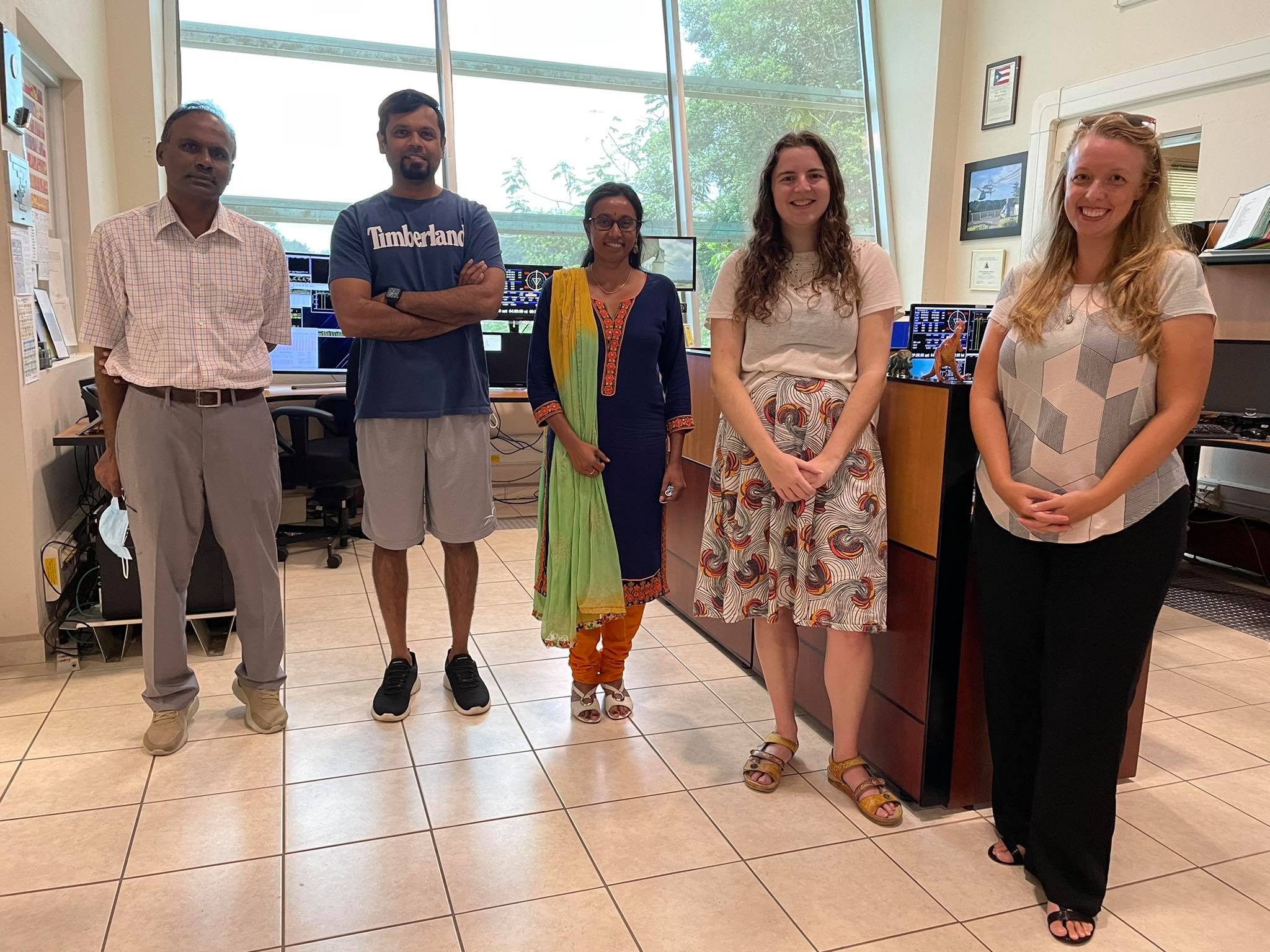- Leter from Dr. Julie Brisset (Principal Investigator of the Arecibo Observatory)13 Sep, 2022
- Arecibo Deputy Principal Scientist to Explore the Cosmos with the JWST02 Sep, 2022
- Letter from the Director22 Aug, 2022
- Piercing through the Clouds of Venus with Arecibo Radar17 Aug, 2022
- Summer greetings from the Facilities and Operations Team!17 Aug, 2022
- Arecibo Observatory at the Small Bodies Assessment Group12 Aug, 2022
- Meet the 2022 Arecibo Observatory REU students!11 Aug, 2022
- Meet Luis R. Rivera Gabriel, Research Intern in the Planetary Radar Group09 Aug, 2022
- Updates from the 2022 CEDAR Workshop in Austin, TX09 Aug, 2022
- Insights into the AAS Conference from AO Analyst Anna McGilvray08 Aug, 2022
- American Astronomical Society’s 240th Meeting: Plenary Lecture Building the Future of Radio Science with the Arecibo Observatory by Dr. Héctor Arce. 28 Jul, 2022
- TRENDS 202227 Jul, 2022
- Advancing IDEA in Planetary Science 27 Jul, 2022
- The Arecibo Observatory: An Engine for Science and Scientists in Puerto Rico and Beyond27 Jul, 2022
- Cryogenic Frontend work for the 12m telescope entering phase II21 Jul, 2022
- Remote Optical Facility Updates20 Jul, 2022
Arecibo Observatory Spies “Pristine” Comet Before the Telescope’s Collapse
Byadmin08 July 2021 Planetary

Image Credit: NASA / ISS
| Planetary |
Excited stargazers with a pair of binoculars were not the only ones to spot the bright comet C/2020 F3 NEOWISE last year!
A team of scientists at the Arecibo Observatory, led by postdoctoral researcher Dr. Allison Smith, aimed the massive 305-meter radio telescope at the celestial object with the goal of understanding how much water the comet was shedding as it approached the Sun.
The unique dataset collected at the Arecibo Observatory would be among the final observations made by the iconic radio telescope before it began experiencing cable failures that led to the telescope’s collapse on December 1, 2020.
Comet NEOWISE, named for the near-Earth object (NEO)-hunting NASA Wide-field Infrared Survey Explorer (WISE) space telescope that was used to discover it, originated in the distant parts of our Solar System. Because of its distance from the Sun, it has likely remained relatively unaltered since it formed.
“Comets are some of the most pristine relics we have from the early Solar System,” - Dr. Allison Smith, Postdoctoral Researcher at Arecibo Observatory
“Comets are some of the most pristine relics we have from the early Solar System,” Dr. Smith explained. “Therefore it is important and very interesting to study these objects with powerful telescopes like the one at the Arecibo Observatory.”
As comet NEOWISE made its way toward the Sun, the comet’s frozen ices began to sublimate - going directly from solid to gas phase - creating the spectacular gas coma that draws both amateur and professional astronomers to the night sky.
The high sensitivity and high spectral resolution capabilities of the radio telescope at the Arecibo Observatory uniquely allowed the team of scientists to measure the amount of hydroxyl (chemical compound OH) in the comet’s coma, which can be directly linked to the amount of water (H2O) that has sublimated from the comet.
The high resolution observations also enabled the scientists to discern the gas dynamics within the comet’s coma, which is useful for understanding how the materials are sublimated and eventually separate away from the comet.
 Scientists at AO's control room, Form left to right: Dr. P.K. Manoharan, Dr. Ben Perera, Dr. Sravani Vaddi, Anna McGilvray, Dr. Allison Smith
Scientists at AO's control room, Form left to right: Dr. P.K. Manoharan, Dr. Ben Perera, Dr. Sravani Vaddi, Anna McGilvray, Dr. Allison Smith
“We obtained a very strong detection of hydroxyl in the comet’s coma,” says Dr. Smith. “Our team planned to do many follow-up observations to map the OH production over the course of its orbit around the Sun and search for even rarer molecules being released by the comet, but the first cable break marked the end of the project.”
Although the project was cut short, the results were still significant. The team was able to quantify both the column density (amount) of OH and the rate at which the OH gas is produced from the comet. The results were published in the Planetary Science Journal’s Arecibo Science Focus Issue.
For Dr. Smith and the team, this final project with the legacy 305-meter telescope at Arecibo was not only exciting, but a new challenge for them, since their scientific research usually focuses on much more distant objects in our galaxy and beyond.
“The comet observations were new territory for us, but it was exciting to explore the interesting physics and modeling techniques involved in studying the OH emissions from a comet,” says Dr. Smith. Although she hadn’t performed comet observations before, Dr. Smith was familiar with them since her days as a college student at Agnes Scott, where she studied under AO user Dr. Amy Lovell.
“The extensive comet studies previously done at Arecibo Observatory by Dr. Lovell and [former AO scientist] Dr. Ellen Howell allowed us to quickly execute our comet observations,” Dr. Smith explains. “I was so happy to get the opportunity to utilize what I learned during visits to AO as a student to observe Comet NEOWISE.”
“The comet observations were new territory for us, but it was exciting to explore the interesting physics and modeling techniques involved in studying the OH emissions from a comet, ” - Dr. Allison Smith
“It is no surprise to me that my final hours using the powerful Arecibo telescope not only resulted in exciting science, but that it taught me something completely new,” Dr. Smith added.
In addition to Dr. Smith, the research team included Dr. Anish Roshi, Dr. Periasamy Manoharan, Dr. Sravani Vaddi, Dr. Benetge Perera, and Ms. Anna McGilvray, all scientists at the Arecibo Observatory.
|
Article written by Dr. Tracy Becker - AO Collaborator / SwRI Research Scientist
Contact: tbecker@swri.edu |
Preeminent Postdoctoral Researcher |
Keywords: observatory, arecibo, mars, planetary, allison, smith,comet, space, NEOWISE, near-Earth, object, hydroxyl

